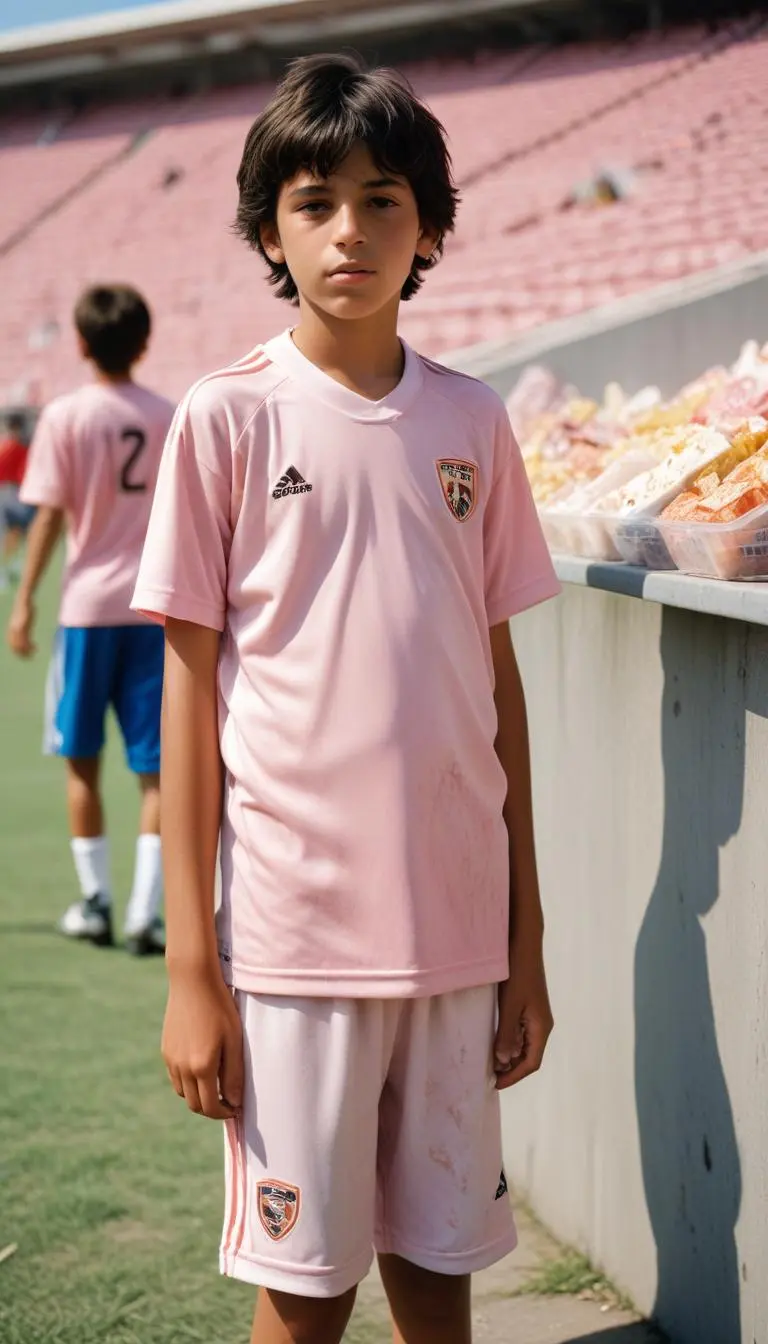
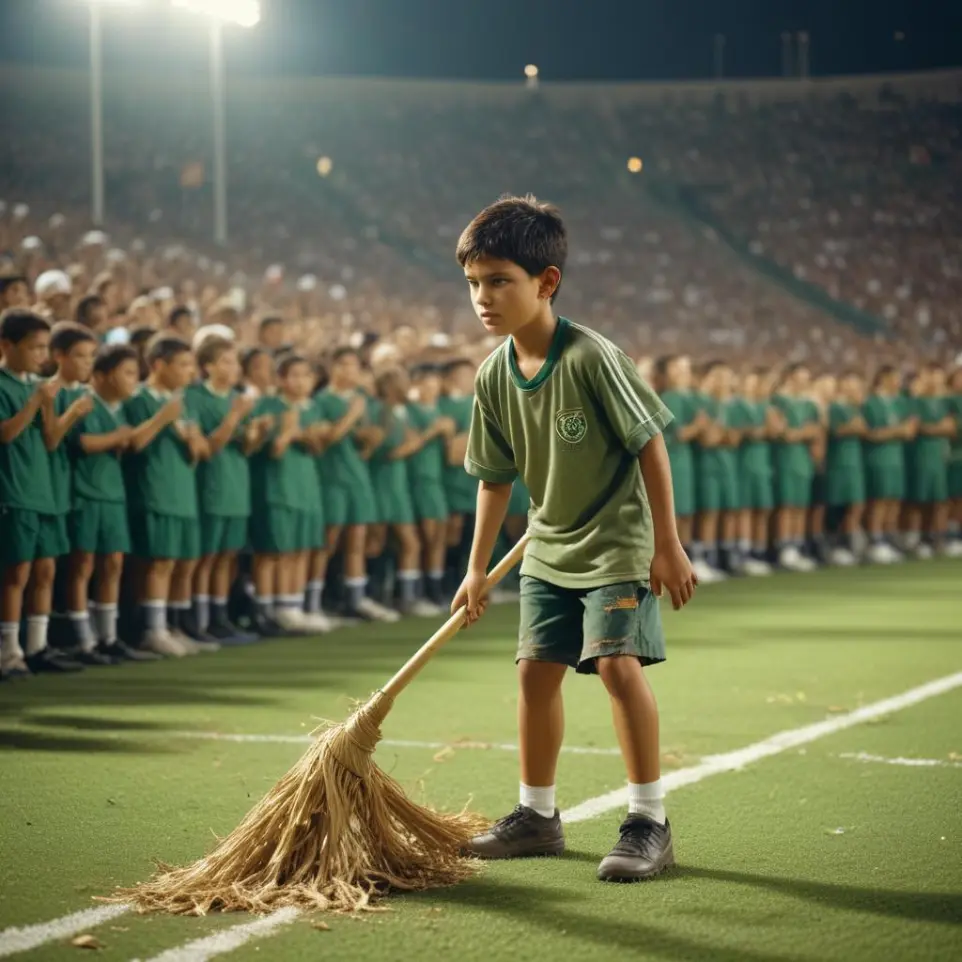

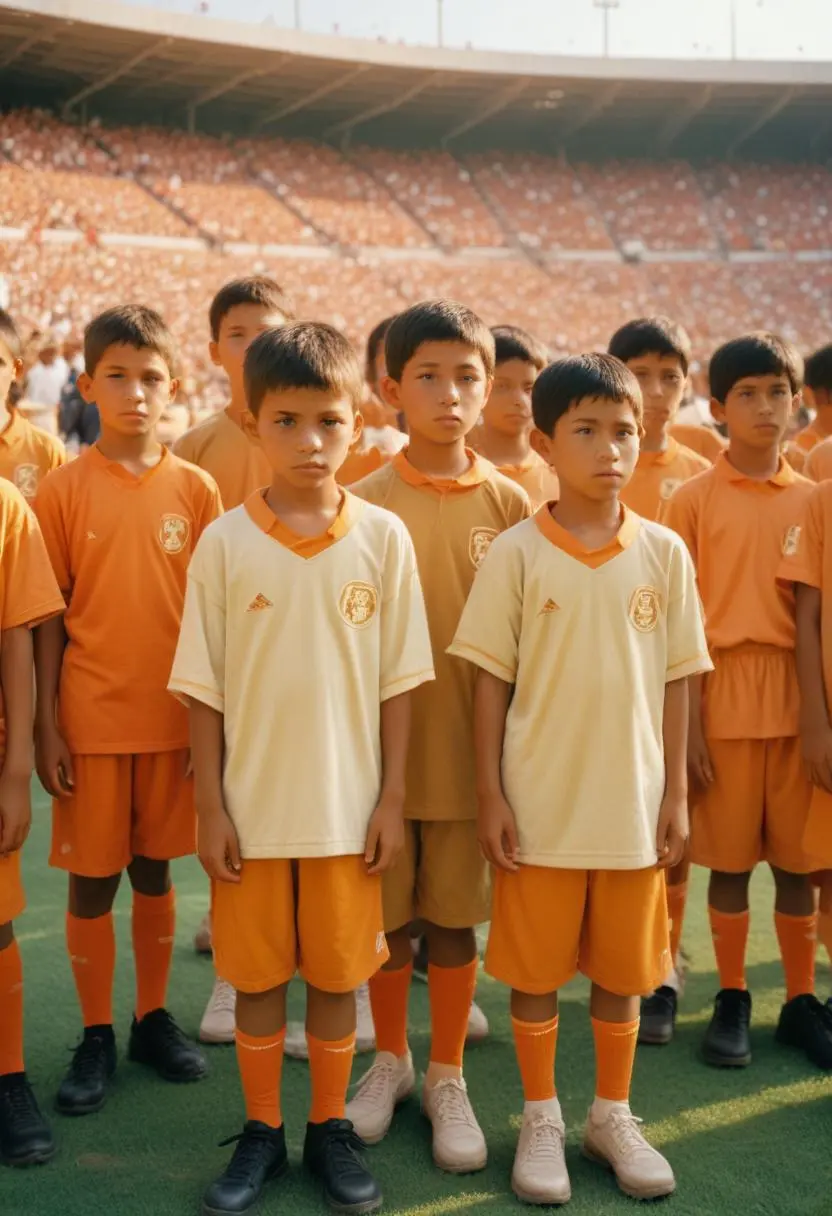
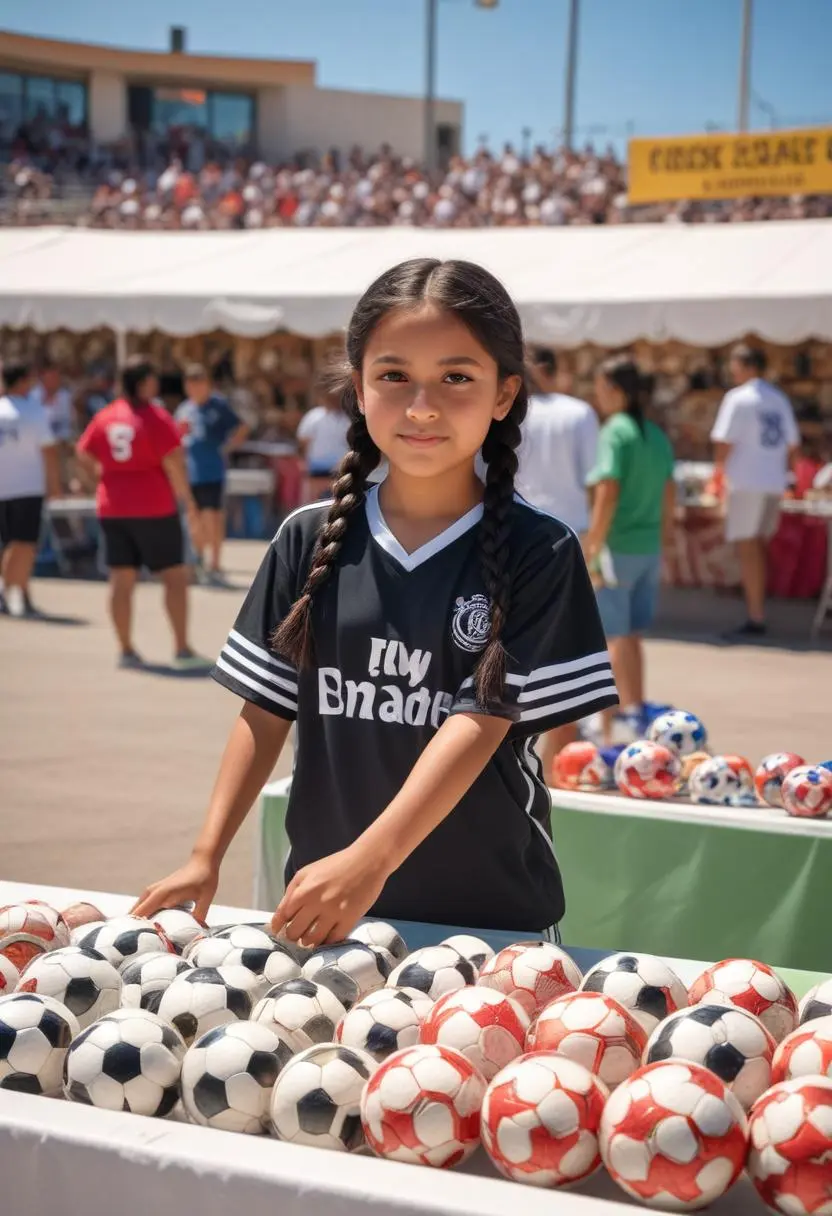
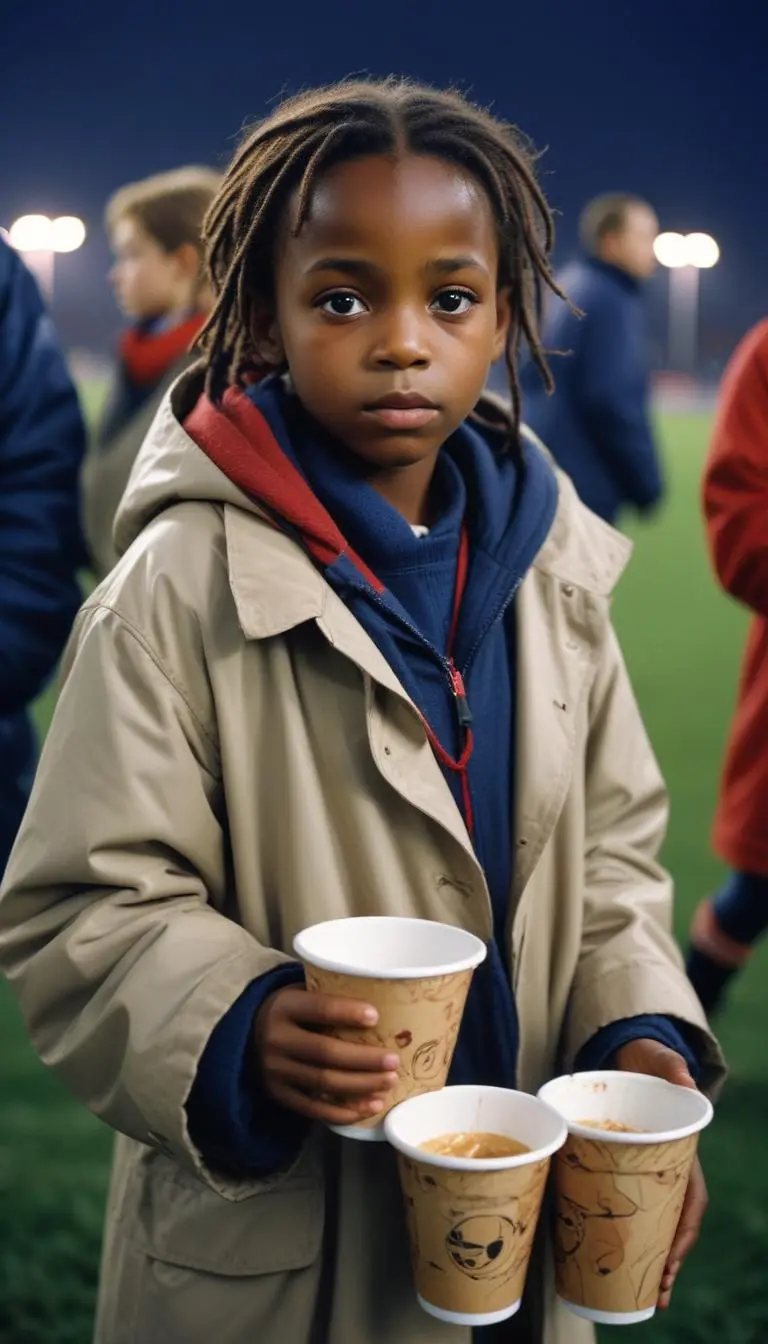
Child Labor in Sports: The Finish Line: Eradicating Child Labor at Sporting Events
Here you will find a space dedicated to the exploration and in-depth analysis of human rights at a global level. In our main article, "Child Labor in Sports: The Finish Line: Eradicating Child Labor at Sporting Events," you will delve into the shocking reality of child labor in the world of sports. Get ready to discover shocking data and innovative solutions. The fight for a more just world starts here!
Child labor in sporting events is a global problem that affects children around the world. It is a violation of their rights and their physical and psychological development.
According to the Declaration of the Rights of the Child: "Humanity owes the child the best that can be given... the child shall enjoy special protection and shall be provided with opportunities and facilities, provided by law and other means, to enable him or her to develop physically, mentally, morally, spiritually and socially in a healthy and normal manner and in conditions of freedom and dignity... the child shall be protected from all forms of neglect, cruelty and exploitation."
By not having an adequate cultural level, countries lack people prepared for advanced studies and technologies. Many of the things that children in developed countries believe are essential for a happy childhood—having toys, going to the movies—are not available to them because they are working to support their families.
They have no time for study or education, no time to play or rest; they are exposed to unsafe working conditions and are not protected.
Child labor has serious consequences that remain with the individual and society long after their childhood years. Working children not only face dangerous working conditions; they also face long-term intellectual and emotional stress. They face adulthood with unemployment and illiteracy.
Tens of thousands of children are exploited for profit every day. Those for whom child labor is profitable must be forced to end this practice and help repair the damage they have caused. They must also contribute financially to the full rehabilitation and education of working children and must be subject to the maximum penalties for exploiting children. Trade unions must campaign to end the recruitment of new children once and for all and for the rehabilitation of existing working children and their replacement by adults, whenever possible from their own families.
Much of the world's sporting goods are produced using child labor. Reporting these companies is a formidable weapon in the fight against these companies, especially those that are well-known and easily identifiable in the domestic market. Reporting through the media, letters of protest against child labor, and boycott announcements and proposals are very effective.
Introduction
Child labor in sporting events is a problem that affects thousands of children around the world. These children are often exploited as street vendors, beggars, or cleaners and maintenance workers around stadiums and sports venues. This situation seriously violates their fundamental rights, depriving them of a dignified childhood and the opportunity to access education and play, which are essential rights for their comprehensive development.
The labor exploitation of children in sporting events not only threatens their individual well-being but also represents an affront to human dignity and the principles of equality and social justice. It is crucial to address this problem comprehensively and urgently to protect children and guarantee them a safe and conducive environment for their development.
It is necessary to implement effective measures to prevent and eradicate child labor in sporting events, as well as to promote awareness and understanding of this issue globally.
Addressing the eradication of child labor in sporting events is critical to protecting the rights of children worldwide. International sporting events, due to their large audiences and media coverage, represent a key opportunity to highlight this issue and take concrete measures to combat it.
The importance of addressing this issue lies in the need to create safe and exploitation-free environments for children attending or participating in sporting events. Furthermore, promoting the eradication of child labor in this context sends a strong message about respect for human rights and fosters social responsibility in the global sports arena.
Taking concrete actions to eradicate child labor in sporting events not only contributes to protecting the children involved but also sets an important precedent in the fight against child exploitation in all its forms.
The eradication of child labor in sporting events has a significant impact on human rights on a global scale. By protecting children from labor exploitation in this context, the effective implementation of children's rights, enshrined in the United Nations Convention on the Rights of the Child, is promoted.
Furthermore, addressing this issue contributes to the achievement of the Sustainable Development Goals established by the United Nations, particularly SDG 8, which seeks to promote sustained, inclusive, and sustainable economic growth, full and productive employment, and decent work for all, including children.
The impact on global human rights is also reflected in the promotion of safe and protective environments for children, as well as in raising awareness about the importance of ensuring the well-being and integrity of children in all spheres of society.
Child Labor in Sporting Events: A Global Perspective
Child labor in sporting events worldwide is a problem that requires urgent attention. Despite efforts to eradicate this practice, children continue to be exploited at various sporting events, from local competitions to large-scale international tournaments.
The vulnerability of minors is exacerbated during these events, as they are used to sell products, perform cleaning duties, carry equipment, and other tasks that are not appropriate for their development or well-being.
The lack of effective regulations and adequate supervision in many countries has allowed child labor to persist in sports, negatively impacting the lives and futures of thousands of children around the world.
According to the International Labor Organization (ILO), an estimated 152 million children worldwide are engaged in child labor, a significant percentage of whom are related to sporting events. This alarming figure reflects the magnitude of the problem and the need for concrete measures to address it.
Furthermore, it has been observed that girls are often particularly exposed to exploitation at sporting events, whether through street vending, domestic work, or begging. These realities highlight the urgency of adopting specific strategies that address gender differences in boys' and girls' participation in sports.
The data collected also reveal that, in many cases, child labor at sporting events takes place in dangerous conditions that are detrimental to the health and well-being of minors, underscoring the importance of implementing effective protective measures.
The eradication of child labor in sporting events presents significant challenges, including a lack of oversight and regulation, the economic pressure that drives families to involve their children in these activities, and the complexity of effectively identifying and addressing cases of child exploitation.
Furthermore, the transnational nature of many sporting events makes it difficult to coordinate across different jurisdictions and consistently implement policies to prevent and eradicate child labor. The lack of awareness of this issue in the sporting context also represents a significant obstacle to addressing it comprehensively.
To achieve significant progress in eradicating child labor in sporting events, it is essential to adopt multidisciplinary approaches involving governments, international organizations, sports entities, businesses, and civil society to implement comprehensive strategies that protect the rights of children in any sporting context.
The protection of children's rights at sporting events is supported by various international legal instruments. Among them, the United Nations Convention on the Rights of the Child is the most widely accepted treaty, which establishes the civil, political, economic, social, and cultural rights of all children. This treaty provides a comprehensive framework for the protection of children's rights in different contexts, including sporting events.
In addition, the International Labor Organization (ILO) has adopted the Minimum Age for Employment Convention, which establishes the minimum age for employment or work and provides certain exceptions for employment within the framework of vocational training programs. This convention seeks to protect children from labor exploitation, including that which may occur at sporting events.
Furthermore, the Universal Declaration of Human Rights, the Declaration of the Rights of the Child, and other international standards complement this legal framework, providing additional protection for children's rights in the context of international sporting events.
Analysis of the eradication of child labor in sporting events
The fight against child labor in sporting events has been addressed through a series of international actions and programs. Organizations such as the International Labor Organization (ILO) have developed initiatives to raise awareness of this issue and promote the implementation of policies that protect children from labor exploitation in the context of sporting events.
These programs include staff training, civil society awareness, the promotion of ethical standards in labor recruitment, and collaboration with local authorities to ensure that children's rights are respected. Monitoring and follow-up mechanisms have also been established to identify and prevent child labor situations in the context of international sporting events.
In addition, awareness-raising campaigns have been implemented to educate spectators, sponsors, and other stakeholders involved in sporting events about the importance of eradicating child labor and promoting safe, exploitation-free environments for children.
The participation of international organizations, such as UNICEF, the ILO, and the FIFA Foundation, has been instrumental in promoting child labor-free environments at sporting events. These organizations have worked closely with organizing committees, sports federations, and host governments to implement policies and programs that guarantee the protection of children's rights during major sporting events.
In addition, these organizations have worked with sponsoring companies and media outlets to disseminate messages about the importance of eradicating child labor in the context of sporting events and have advocated for the inclusion of ethics clauses in commercial contracts to prevent child exploitation.
The collaboration between these organizations and the various stakeholders involved in sporting events has led to the promotion of corporate social responsibility policies and the adoption of concrete measures to protect children from labor exploitation in this context.
The eradication of child labor at the finish line of international sporting events not only represents an achievement in terms of human rights protection, but also has a positive impact on the image and reputation of the events and organizations involved. Adopting effective measures to prevent child labor contributes to promoting safe, ethical, and socially responsible environments, which strengthens the legitimacy and attractiveness of sporting events globally.
Furthermore, the elimination of child labor at sporting events sends a strong message in favor of child protection and respect for human rights, which can inspire other industries and sectors to follow this example and promote fair and equitable labor practices.
Ultimately, the eradication of child labor at sporting events contributes to building a positive legacy for future generations, ensuring that children can enjoy their right to education, play, and full development, without being exposed to exploitative labor situations.
The eradication of child labor in sports events requires close collaboration between sports entities, governments, and human rights organizations. Sports entities, such as international federations, Olympic committees, and event organizers, have a responsibility to implement policies that prohibit child labor at all stages of sporting event organization. This includes the supply chain of event-related products and services, as well as the promotion of ethical values and human rights in all event-related activities.
On the other hand, governments have a fundamental role in creating and enforcing laws that prohibit child labor and guarantee the protection of children's rights. Furthermore, they must monitor and enforce these laws and work closely with sports entities to ensure they are respected at all international sporting events held in their territories.
Human rights organizations play a crucial role in advocating for the protection of children's rights, monitoring the situation of child labor in sporting events, and advocating for the implementation of effective measures to eradicate this practice. Furthermore, these organizations can collaborate with sports organizations and governments to develop educational and awareness-raising programs that promote respect for children's rights in the context of sporting events.
Challenges and opportunities in eradicating child labor in sporting events
Child labor in sporting events persists due to several interrelated factors. First, the demand for cheap and flexible labor drives some employers to resort to child labor to cut costs. Furthermore, the lack of effective enforcement of labor laws and inadequate oversight of sporting events allow this illegal practice to continue unchecked. Furthermore, poverty and lack of access to adequate education push families and children to accept work at sporting events as a means of subsistence.
Furthermore, the absence of awareness and training programs for sporting event organizers and sponsors also contributes to the persistence of child labor. Lack of awareness about the ethical and legal implications of employing children in these settings leads to a normalization of this practice in some cases.
It is crucial to address all of these factors comprehensively to make significant progress in eradicating child labor in sporting events.
In the fight against child labor in sporting events, several innovative initiatives have been developed to effectively address this problem. One such initiative is the implementation of monitoring and evaluation systems that identify and address child labor in sporting event supply chains. These systems seek to ensure that suppliers and contractors comply with labor regulations and do not employ child labor.
Another innovative initiative is the establishment of partnerships between government agencies, non-governmental organizations, and sports entities to develop comprehensive strategies to eradicate child labor. These partnerships allow for the sharing of resources, knowledge, and experiences to address the problem in a joint and coordinated manner.
Furthermore, promoting transparency and accountability in the sporting event supply chain, through the disclosure of information on labor practices and compliance with ethical standards, has proven to be an effective tool in combating child labor in this context.
Awareness and education play a fundamental role in the fight against child labor in sporting events. It is crucial to educate organizers, sponsors, and spectators about the negative consequences of child labor and the importance of respecting children's rights. This can be achieved through awareness campaigns, educational materials, and the incorporation of clauses on the eradication of child labor in contracts and sponsorship agreements.
Furthermore, quality education and access to development opportunities for vulnerable communities are critical to reducing children's vulnerability to child labor. Investing in educational programs, scholarships, and extracurricular activities can provide children with viable alternatives to work in sporting events, empowering them to build a future free from labor exploitation.
Awareness and education are powerful tools for changing the perceptions, behaviors, and practices that perpetuate child labor in sporting events and are essential for making progress toward eradicating this problem.
The development of comprehensive strategies to ensure child labor-free sports environments is essential to protecting the rights of children at international sporting events. These strategies must address not only the prevention of child labor, but also the identification and protection of children who may be at risk. It is essential to involve all stakeholders, including sports organizations, governments, NGOs, and businesses, in the creation and implementation of these strategies.
Comprehensive strategies should include education and awareness-raising programs on children's rights, as well as monitoring and reporting systems to identify and respond to cases of child labor. Furthermore, it is crucial to establish monitoring and evaluation mechanisms to measure the effectiveness of these strategies in eradicating child labor at sporting events. International collaboration and the adoption of common standards are essential to effectively address this challenge at global sporting events.
Furthermore, it is important that comprehensive strategies include the promotion of educational and development opportunities for children, providing them with alternatives to child labor. This can include scholarship programs, access to extracurricular activities, and support for developing skills that will allow them to have a promising future outside of child labor in sporting events.
Conclusions
The eradication of child labor in sporting events has been a major issue on the global human rights agenda. While significant progress has been made in raising awareness and implementing measures to prevent this problem, significant challenges remain that require immediate attention.
It is encouraging to see how various organizations, governments, and international sports entities have worked together to develop policies and programs that seek to protect children from labor exploitation in the context of sporting events. However, it is crucial to recognize that much remains to be done.
Pending challenges include the need for more rigorous and effective oversight during the planning and execution of sporting events, as well as the implementation of reporting and protection mechanisms for children who may be at risk. Furthermore, addressing the underlying causes of child labor, such as poverty and lack of access to education, is essential to achieving a sustainable impact in eradicating this problem.
To advance the protection of children's rights at sporting events, it is crucial to establish and strengthen partnerships between governmental, non-governmental, and sports organizations worldwide. These partnerships can facilitate the implementation of comprehensive strategies that address not only the eradication of child labor but also the promotion of safe and healthy environments for children.
Furthermore, it is essential to strengthen monitoring and evaluation mechanisms to ensure effective compliance with existing policies and regulations, as well as the early identification of potential risk situations. Transparency and accountability are essential elements in this process and must be actively promoted by all stakeholders.
Finally, education and awareness-raising about children's rights, both in the host communities of sporting events and in society at large, are key to preventing and addressing child labor. Promoting values such as equity, respect, and solidarity through educational campaigns can significantly contribute to the protection of minors in this context.

 IHRO NEWS
IHRO NEWS